Today’s consumers want the freedom to search the web for the products and services they need wherever they are online.
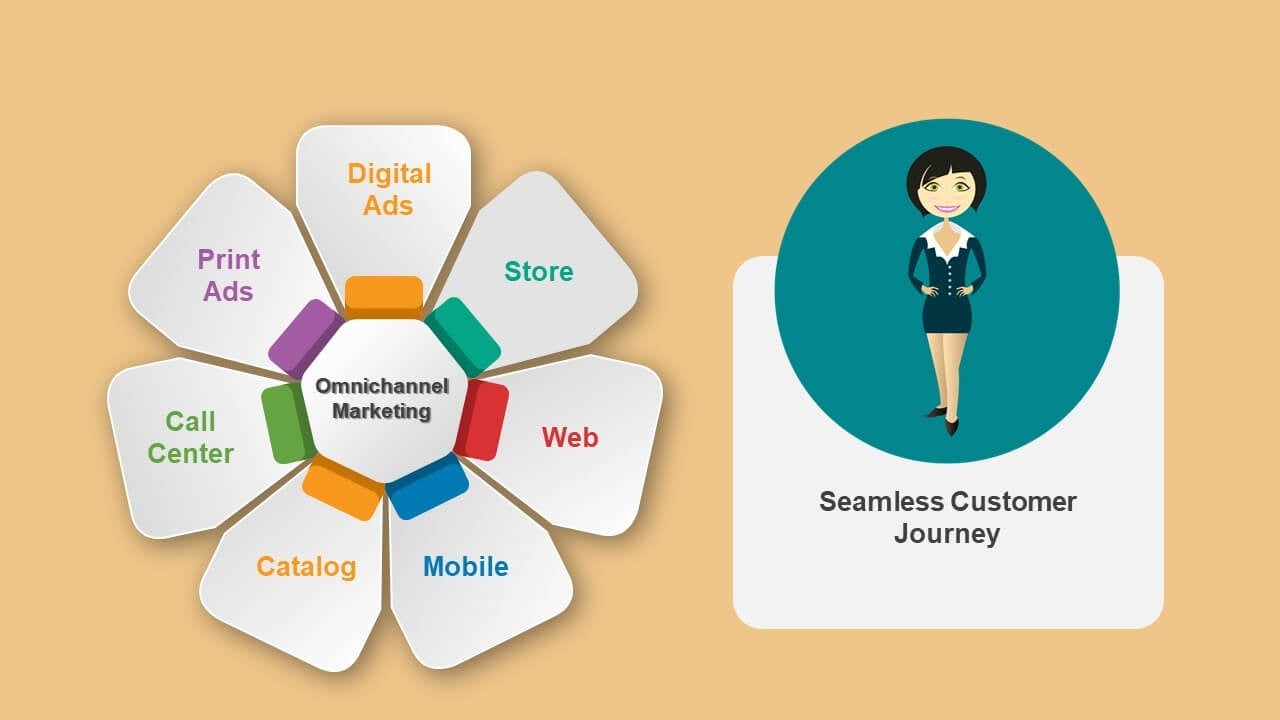
The buyer’s journey consists of a variety of touchpoints where customers engage with a brand.
What is Omnichannel Marketing?
Customers expect the companies they purchase from listen to and value them. It is the responsibility of the company to make sure their consumers realize they matter.
Omnichannel marketing refers to a brands’ voice and sales approach that integrates different customer engagement channels to meet the consumer where they are.
Trying to keep track of all the data, information, and processes involved with omnichannel marketing can be overwhelming.
To help keep track of all your data and initiatives, it’s helpful to find a good project management tool to help you stay organized.
Many shoppers begin their buyer journey online to research a product and then complete the purchase in a physical store.
Whether on a computer or mobile device, shoppers expect to have access to any information they are looking for and to have a quality experience during their buying journey.
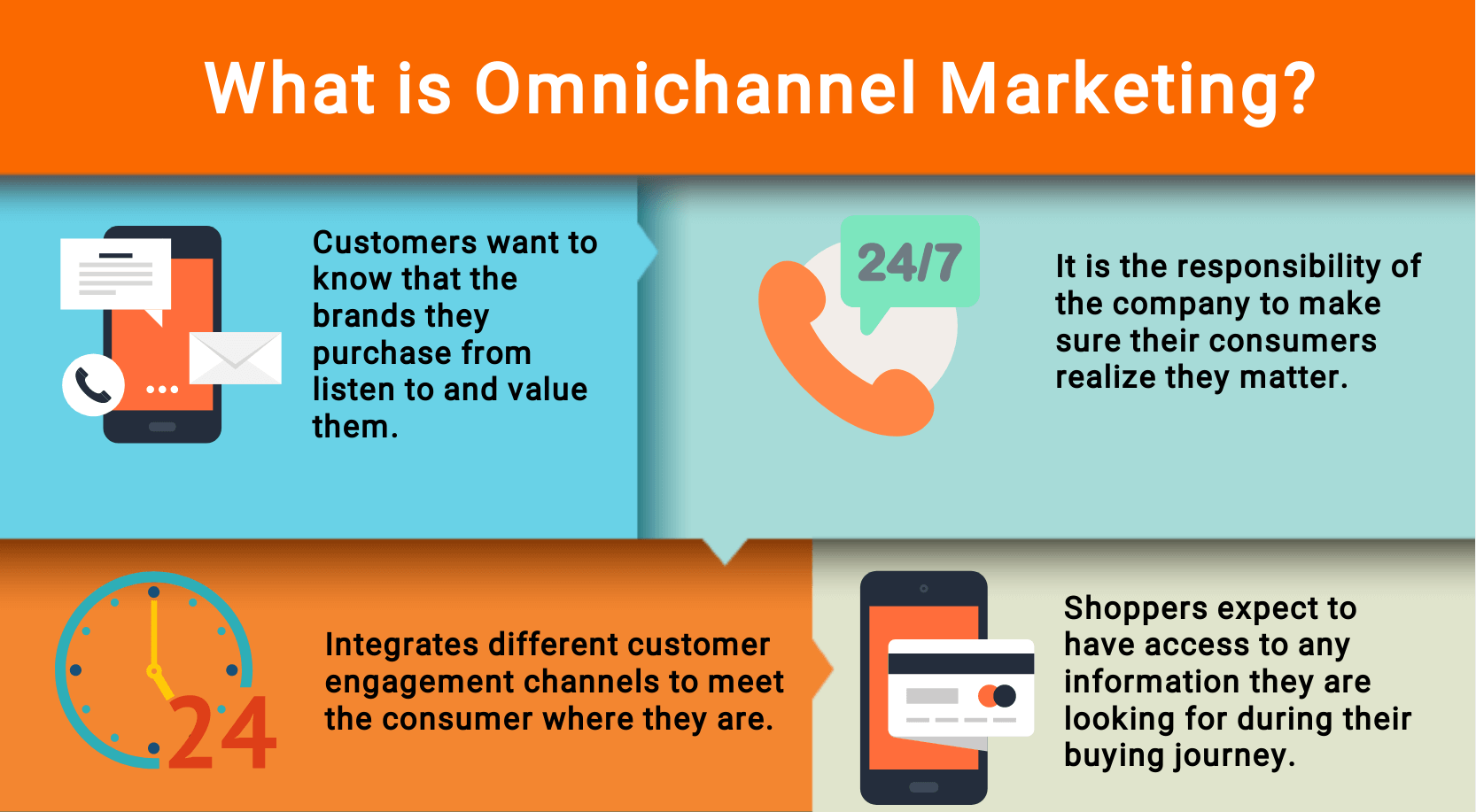
Omnichannel marketing creates a single user experience utilizing multiple channels.
Why Use Omnichannel Marketing?
Obviously, shoppers benefit from the smooth and seamless buyers’ journey as it makes their lives easier. For the businesses that utilize it, omnichannel marketing improves customer engagement and retention and increases purchase rates and customer spending.
The statistics and attributions in the infographic below point to the importance of omnichannel marketing for businesses:
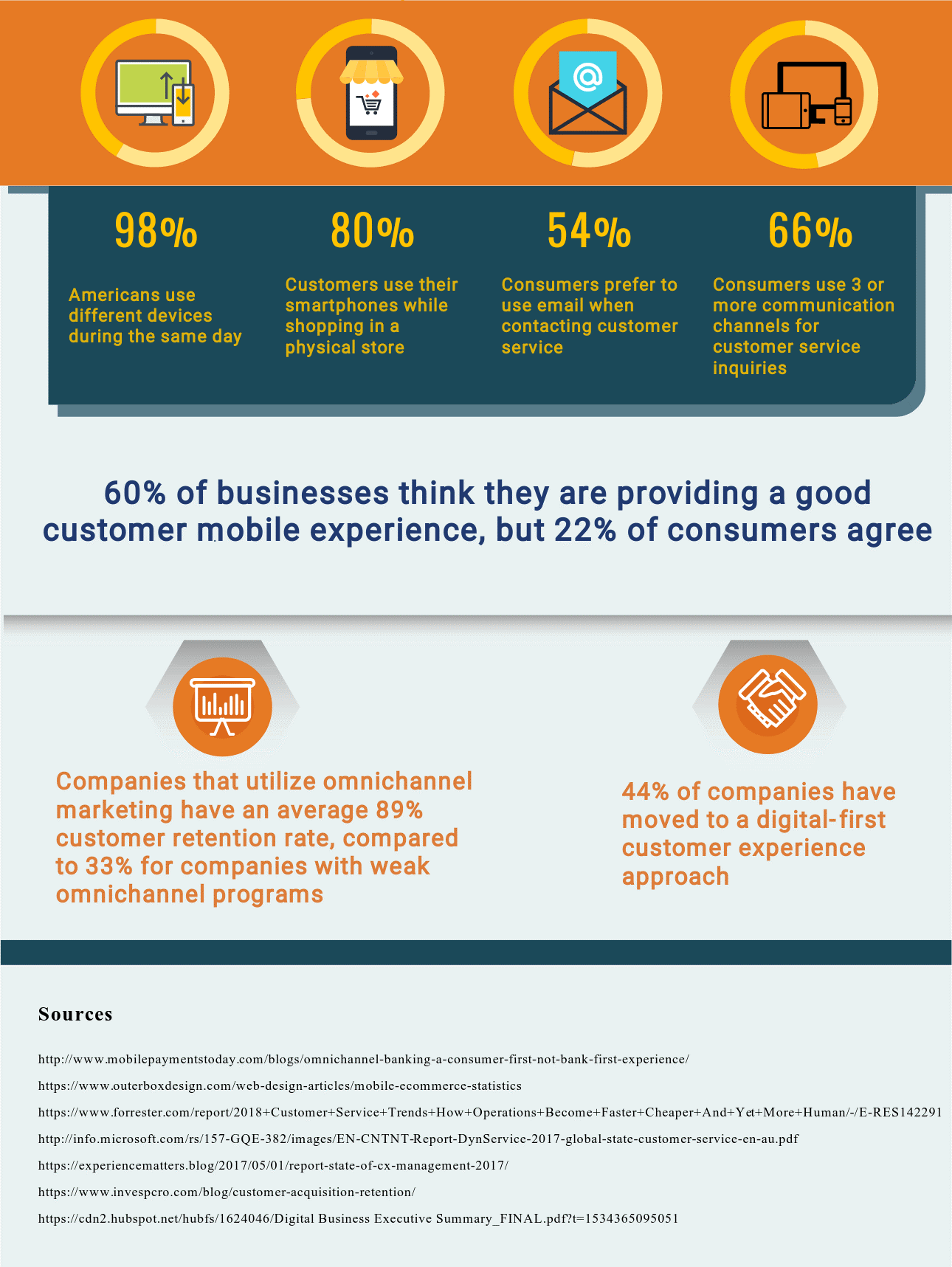
· According to Google Research, 98% of Americans use different devices during the same day.
· 80% of customers use their smartphones while shopping in a physical store to look up reviews, product information, and prices.
· 54% of consumers prefer to use email when contacting a company’s customer service department.
· 66% of consumers use three or more communication channels for customer service inquiries,
· While 60% of businesses think they are providing a good customer mobile experience, only 22% of consumers agree.
· Companies that utilize omnichannel marketing have an average 89% customer retention rate. This is compared to 33% for companies with weak omnichannel programs.
· 44% of companies have moved to a digital-first customer experience approach.
Omnichannel marketing works because customers get what they want. That is a strategy that puts them first with an integrated and seamless shopping experience from whatever channel they are on.
Keeping customers happy and satisfied with their experiences with your brand gives them confidence and increases their loyalty to your company.
Although it takes time and dedication, implementing omnichannel strategies is well worth the effort. Keep in mind that satisfied customers not only become repeat customers, they are also likely to refer your business to others.
Omnichannel refers to a shift in the manner shoppers proceed through your marketing funnel. When done correctly, brands will have a presence both online and offline, so customers can find them wherever they are and seamlessly navigate across all channels.
How to Create an Omnichannel Marketing Program
Follow the steps below to create and implement an omnichannel strategy to streamline your marketing outreach, retain current customers, and increase your ROI.

Know Your Target Audience
If you want to attract potential customers, give them what they want or need. Start by creating buyer personas by using the data you collect.
A buyer persona is a description of the characteristics of your target marketing, including their buying habits, behaviors, demographics, preferences, age, gender, and hobbies.

Personas help brands create messages and marketing materials that match their market. The most effective buyer personas blend qualitative customer responses with behavioral data to help companies target specific customer segments.
Identifying potential buyers whose needs align with your brand messaging will increase engagement rates and conversions.
Larger organizations with multiple products or services will need to create buyer profiles for each offering.
Comprehensive buyer personas answer numerous questions about target audiences, including:
· Age
· Gender
· Hobbies
· Household income
· Education level
· Career goals
· Work challenges
· Job title
· Work category
· Reading habits
· Marital status
· Living environment
· Pain points
· Level of technical expertise
· Social media habits
· Communication preferences
Do not ask questions that are not relevant to your product or service. How can you gather this necessary information from potential customers to create buyer personas?
· Conduct online surveys or send questionnaires to your existing customer base.
· Check analytics for demographics, location, and device usage about your site visitors.
· Ask current employees face-to-face about their interactions with customers.
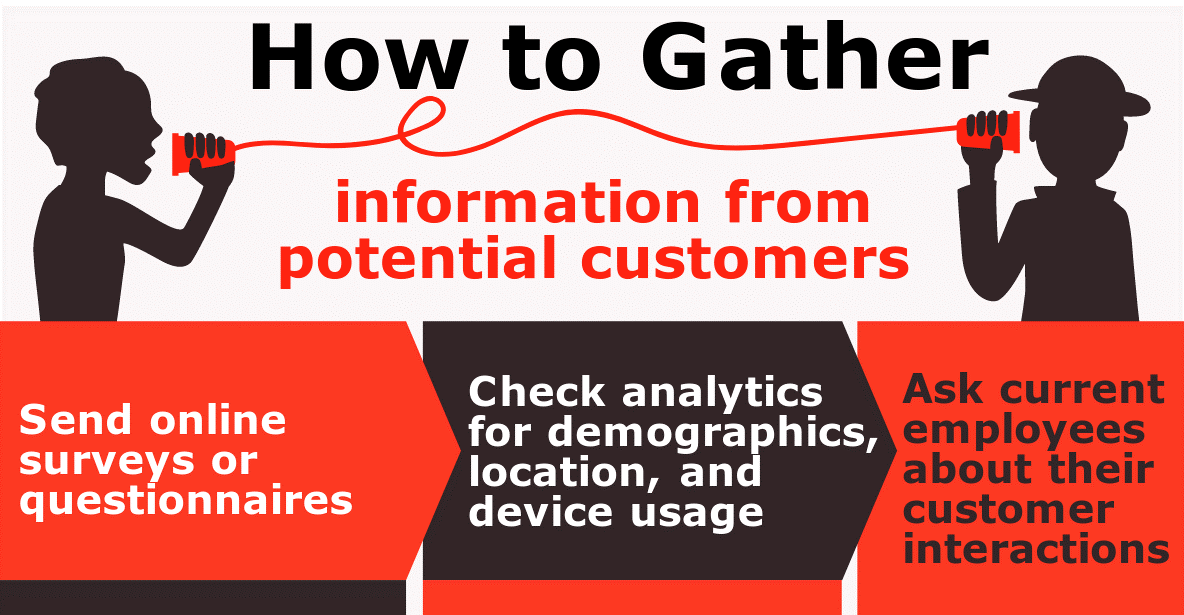
After identifying the characteristics of potential customers and creating personas, you will know where and how to interact and connect with potential buyers.
In addition to using data, try walking through a customer’s shoes. Start on a landing page and go through the entire buyer’s journey to help create buyer personas.
Having a clearly defined target buyer persona enables businesses to speak directly to the customers to whom they want to sell their services and products.
Taking the time necessary to learn everything you can about your potential buyers pays off in the long run. Companies that have identified buyer personas exceed their lead goals and revenue projections by 71%.
Segment Your Target Audience and Email Lists
Segment your buyers into categories based on the persona you created to target messaging to specific people.
Rather than frustrate prospective customers with irrelevant messages, attract them with content that engages them, addresses their needs, and answers their questions.
Marketing automation and CRM platforms automatically segment contacts according to the personas you have created as well as other demographic or behavioral characteristics you choose.
To provide a positive customer experience and increase your digital marketing ROI, segment your target audience and your email lists.
Accurate data and relevant information are necessary for effective email list segmentation. However, digital marketers know the golden rule of lead generation. Use as few fields as possible in a form for better conversion rates.
So, how can you segment an email list with the limited information a lead provides on a form? When website visitors see too many questions, it is highly likely they will leave.
A better solution is progressive profiling. Businesses should collect smaller pieces of data at different intervals throughout the customer journey.
Align Your Content with Each Buyer Journey
Every buyer journey is different and requires individual attention. Personalize content for every stage in the journey.
For example, if a consumer puts items in an online shopping cart but abandons it without completing the purchase, sending them an email reminder to come back and complete their purchase could be all it would take to convert them.
Adding a personal touch, such as a first name, providing a hassle-free buying experience, and personalizing the content you send out will increase customer engagement and conversions.
Analyze and Prioritize Devices and Channels
Understanding how website visitors interact on your site can provide a lot of information about your customers.
Use marketing automation analytics and social monitoring to assess all the channels you are using to determine which are the most effective.
Identify which channels are performing the best to know where to allocate more time and resources.
Listen to and pay attention to what customers are saying about your brand. This will give you insights into what is working and what is not.
Customize your messaging and marketing initiatives to focus on how you can address their concerns and needs.
Measure Your Efforts
Building a strategy around behavioral tracking, metrics, and analytics reports makes it less challenging to compare results from different communication channels.
An effective and well-planned omnichannel marketing strategy reduces the overwhelm by enabling brands to get a clear overview of their initiatives.
Businesses can turn customer feedback and behavior into actionable insights by using the data collected from multiple channels.
Focus on Customer Support
Catering to consumers is paramount in today’s digital landscape. Customer service is getting more personal and has never been more critical than it is today.
Unhappy shoppers are much more likely to share their dissatisfaction with the digital world. Social media makes it even easier by providing a massive platform to express their complaints loudly and conveniently.
Below are some enlightening statistics about customer experience, service, and satisfaction to highlight the importance of providing stellar customer service.
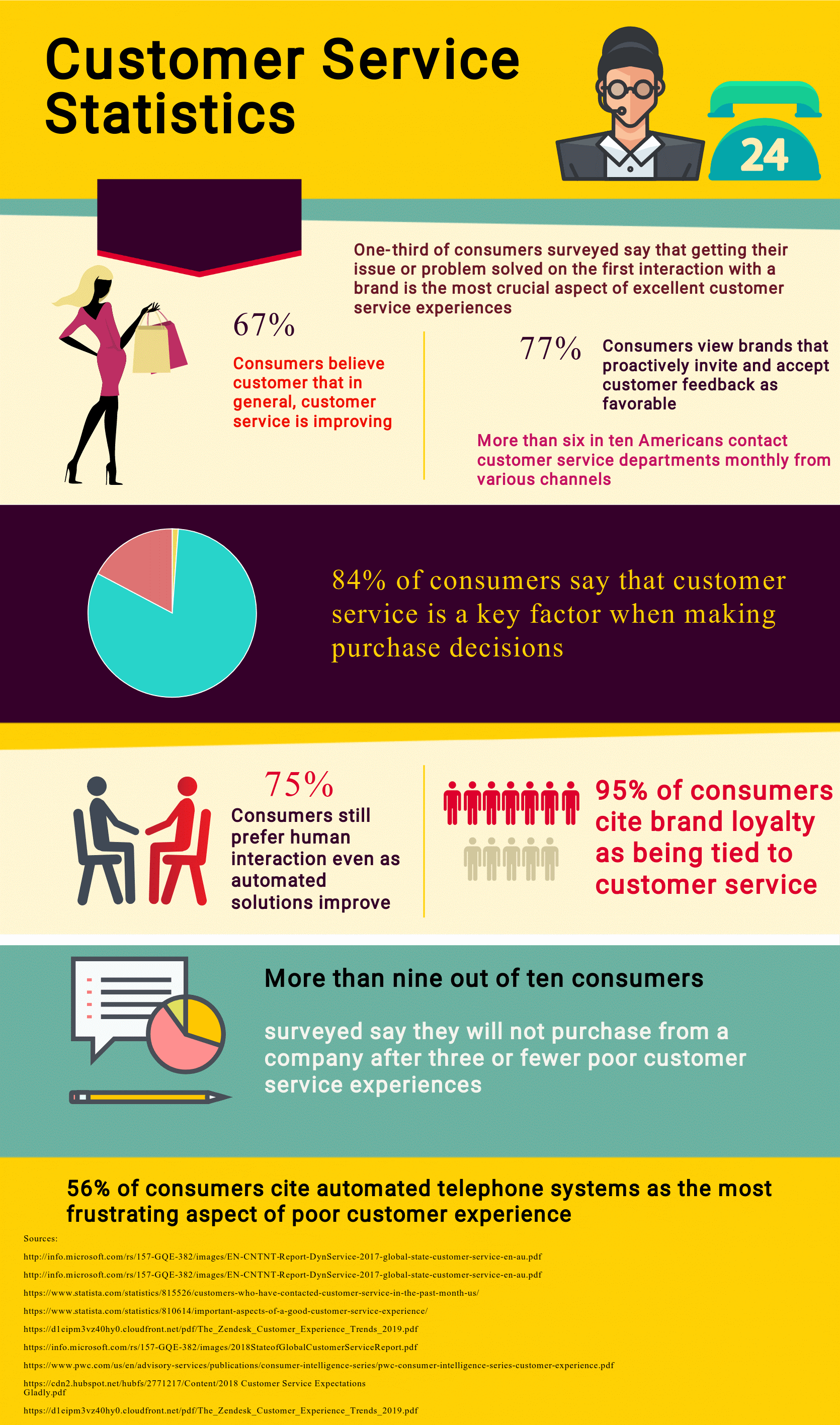
As shown in the infographic and attributed above:
· 67% of consumers believe that in general, customer service is improving.
· 77% of consumers view brands that proactively invite and accept customer feedback as favorable.
· More than six in ten Americans contact customer service departments monthly from various channels such as email, text, phone, live chat, or social media.
· One-third of consumers surveyed say that getting their issue or problem solved on the first interaction with a brand is the most crucial aspect of excellent customer service experiences.
· 84% of consumers say that customer service is a key factor when making purchase decisions.
· Brand loyalty is cited by 95% of consumers as being tied to customer service.
· 75% of consumers still prefer human interaction even as automated solutions improve.
· More than nine out of ten surveyed consumers say they will not purchase from a business after they have had three or fewer poor customer service experiences.
· 56% of consumers cite automated telephone systems as the most frustrating aspect of poor customer experience.
As the statistics above show, customer service should be a top priority when establishing your omnichannel marketing strategy. Look to your marketing department, customer service, and support teams for the feedback they are receiving.
Check, Balance, and Integrate Your Findings
Interweaving all your insights into a seamless consumer experience is the final and most crucial step in planning your omnichannel marketing strategy.
Coordinate and share feedback with everyone who interacts with customers. Try thinking outside of the box and coming up with creative ideas.
Assess how each initiative is working and make changes where needed. To ensure that your omnichannel strategy is optimized, make sure all procedures support one another, including:
· Web and SEO
· Email marketing
· Mobile
· Content marketing
· Advertising
· Print marketing
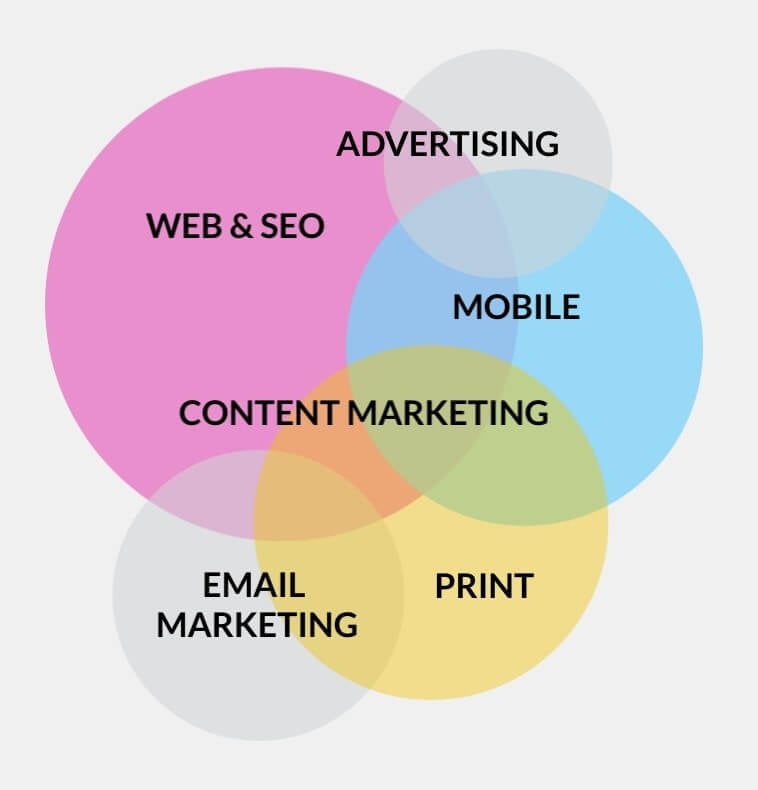
When all channels are integrated and taking cues from each other, customers will feel confident that they will get the same response no matter which channel they use to interact.
Leverage all the data you collect to optimize your omnichannel marketing strategy. Measure and assess initiatives often.
Improve Your Customer Service and Increase Sales with Omnichannel Marketing
In today’s digital era, providing a seamless customer buying experience has become a necessity. You can use transactional emails to automate communication with customers. With so many channels to stay on top of, the more you can automate, the better.
Companies are empowered by better integration between communication channels and access to massive quantities of data.
Use the insights wisely to target each customer persona and offer support and value. Build stronger brand loyalty, increase customer retention rates, and boost revenue.




interesting article Julie. Please allow a question: is this really about exceeding customer expectations or rather about meeting them (consistently)? I ask this, as exceeding customer expectations will lead into a vicious circle because what exceeds my expectation now soon becomes the norm.
What do you think? How to avoid this vicious circle?
Hi Thomas,
The problem is that customers already expect almost immediate responses from whatever channel they choose to use. While exceeding expectations consistently can be daunting, having someone who has the tools and experience to stay on top of messages flying in from all over the place makes it easier.
If none of your competition is managing to do ominchannel marketing well, you might not need to be exceptional. But if you’re in a very competitive niche, upping the ante can make it worthwhile.
The difference of 56% in customer retention rate should serve as ample incentive. (89% retention for strong omnichannel results vs 33% if weak.)
Customers expect response times based upon the channel they use. In case of a chat this surely is immediate, phone is synchronous (and there is nothing worse than ‘your call is important to us … please wait’), e-mail has hours to sometimes days. A product recommendation on the web site surely needs to be immediate, too, or else the web site will be abandoned. it also needs to be highly relevant without being creepy. Most of this is about service, not marketing, which is quite a difference.
The question remains: What exceeds expectations now is meeting expectations (at best) soon. It is not viable to follow this path. How do you recommend to avoid this vicious circle?
Thomas, it is not a “vicious circle” to exceed customer expectations, if done right.
I agree that *frequently* doing more than expected could lead to an upgraded expectation, requiring even more to exceed expectations in the future. It’s an interesting thought experiment, but as this argument has been raised in the past, I’ll ask again… have you any examples of a company actually doing this?
The alternative is apparently to just do only what is expected, and no more. In some cases, say for utilities or limited/bad competition, that could be sufficient to get an edge. I don’t want my power company to exceed my expectation, I just want it to work 100% of the time.
But for competitive markets, other companies want to poach your customers, and how to they do that? By providing more.
It’s also well known that just meeting customer expectations leads to satisfied customers, who are not especially loyal. Leading brands strive for more “top box” (very satisfied) or NPS “promoters” because they are more loyal, and loyal customers drive brand value. One great example: Apple.
So, the smart business leader invests in innovation and strategically offered moments of “delight” to stay competitive and differentiate, while not stimulating the vicious circle problem. Unlike the “vicious circle” thought experiment, there are many examples of this in the real world.
Yes, responding to customers is more about customer service than marketing.
I would argue that most people would be quite dissatisfied with it taking days to respond to email.
There is a limit to how much you can exceed expectations. If you fine-tune your processes to the point that you respond to customer messages immediately and ensure you always get them the best answer you can, at that point, no additional reasonable expectations exist.
Now, if you want to exceed them by starting to send out gifts of flowers, that is a business decision whose economic viability is based on what you sell.
Hi Bob,
I do not know any company that frequently exceeds my expectations, unless they have set it deliberately low (like e.g. Amazon giving a delivery date and then being faster). The companies in competitive markets still are often stuck in an old mindset … and provide a discount for customers that change their vendor. Works in Enterprise Software, too, not only in utilities. I agree that the smart leader needs to *occasionally* provide the delight. Thing is that it needs to be genuine and matching. So, we had the (maybe implicit) statement that expectations need to be exceeded. The question remains: In how far or how often? How to avoid a vicious circle. By striving for exceeding, you don’t. By consistently delivering the promised (and desired, by the customer) result, you keep them loyal, especially if it is easy to achieve for the customer. There is no incentive (other than a better price, perhaps, or a consistently better experience) to change. Then we are back to the spiral. I guess my question is where (and how) we find the right balance.
Julie, I guess you get my point … different channels require different reaction times. There is not only a limit to how much I can exceed but also to how much I want to exceed, even to how much I should exceed. The first two are probably defined by financial constraints. The third one also depends on the understanding of the customer and what (s)he values plus my customer segmentation. What I want to find out is how you suggest to define how and how far to exceed – and how to decide. 😉
I don’t see any evidence at all of companies trying to delight their way into bankruptcy, which seems to be the hypothetical argument.
I think rather than exceed (or not) customer expectations, the business decision is: How best to differentiate?
* Some companies might do so by providing more channels to communicate
* Others might decide to add “delight” at strategic points of the journey — like Zappos.
* And if competitors provide lousy service, being “just ok” could be enough to stand out.
Another important issue is that expectations are not just set by the company. Industry norms and competitors also play a role in what is considered minimum. Amazon and others have raised expectations for purchase experience/delivery time, and it’s affected even B2B.
As a general statement, though, I think many companies struggle to get the basics right. They should work on that first before trying something more. However, in highly competitive industries like retail or travel, just doing basics won’t cut it.
As to how far to go to exceed expectations, that’s the job of CEOs to decide, and why they earn the big bucks. But it has to be enough to move the needle on customer loyalty. Good research can figure this out.
Hi Thomas,
Companies should set expectations they are prepared to meet and then deliver to that standard. That will be enough for some customers and not enough for others. But being clear on what response times you intend to provide can manage expectations somewhat. It also provides a measurable target for your employees to meet. The bottom line is that customers should not be ignored and when there are issues they need to be resolved in a timely manner. Many companies are failing at customer service. That gives them a place to start.
Hi Bob,
I agree that if your competitors are giving more and going beyond customer expectations, you will lose out. And as you stated, satisfied customers is certainly something to strive for, but loyalty should be an ultimate goal.
of course companies don’t delight their customers into own bankruptcy Bot – just that I get the sneaking feeling that too many pundits try to talk them there. That’s why I am sort of suspicious when it comes to statements into that direction and bring in the pyramid of customer expectations: Get it done, make it efficient for the customer, make him feel treated human. I agree that many businesses are struggling with the base of the pyramid (get it done) and think the three of us are pretty much in alignment. Sorry, if I yanked too hard on the chain 😉
Hi Thomas, no worries 🙂 Makes for interesting conversation. Enjoy your weekend and stay safe.